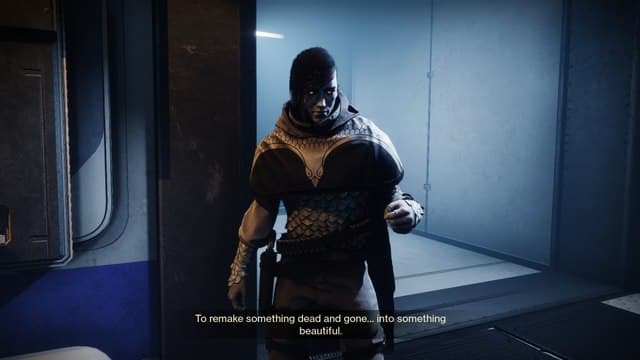Mushrooms, more than almost any other living thing on the planet, seem to inspire curiosity and trepidation in equal measure. Maybe this is, alongside cephalopods, mushrooms are about as alien from us as you can get while still having things in common. Maybe it’s a fear of contamination or getting sick — from eating the wrong one, from inhaling spores, from becoming host to a fungus. Maybe they just look weird to us.
Whatever the case, mushrooms have long been a fixture in video games as they have been in other kinds of stories. Super Mario’s 1-UP Mushroom is one of the most iconic images in gaming period, and mushrooms — sometimes bouncy, sometimes animate enemies, sometimes dangerous affliction — appear in games ranging from Dragon Quest to The Last of Us. Back in 2021’s Season of the Chosen, Destiny 2 introduced the Egregore, a mysterious space fungus with unusual properties. Now, in the Season of the Haunted, it’s returned. But what is the Egregore, and what can real-life mycological knowledge tell us about it?
In one of the “Behold” activities on the Leviathan, Calus tells the Guardian that the Egregore fungus is “drawn to the unique psychological phenomenon of death,” adding that “the death of sentient beings” fosters its growth. That would make death the Egregore’s “substrate” — a term referring to the surface on or in which a fungus lives and feeds on. The notion of a fungus that feeds on death may seem a little far-fetched, but many fungi break down and feed on dead and decaying organic matter. In fact, fungi are some of the most important and skilled decomposers in nature, with some even capable of digesting tough lignin, thus freeing up that carbon and continuing the carbon cycle.
As far as we know, no real-life fungus is specifically drawn to the death throes of sentient beings. But many mushrooms do, of course, have interesting psychological interactions with humans. The chemical psilocybin, found in more than 200 species of fungi, can induce euphoria, hallucinations, changes in perception and sense of time, and spiritual experiences that often feature a sense of connectedness with the universe. That last attribute may have inspired the Egregore’s mechanical function in Destiny 2, whereby shooting a mass of the fungus and being exposed to the spores allows the Guardian to pass through barriers of Darkness. (Amusingly, author Aldous Huxley wrote a book on his experiences with psychedelics called The Doors of Perception, though he was talking about the cactus-derived mescaline.)

Even the shape of the Egregore is based on real fungus. While most of us tend to think of fungus as little toadstools popping up out of the ground, fungi come in many shapes and forms, with most of their bodies buried below the ground or within their substrates. Sidebar: Ikora Rey’s Ghost Ophiuchus draws an interesting parallel between this phenomenon and the nature of the Light and Ghosts in the lore for the Warlock Exotic Secant Filaments, noting that “What we see is the mushroom, the fruit of the fungus. The fungus itself is a vast mycorrhizal network of filaments growing and working unseen below the soil, often barely connected to the fruiting bodies we observe. Similarly, we have observed Ghosts—Hive Ghosts included—without understanding the nature of the unseen filaments that may guide us.”
The Egregore’s shape is likely drawn in part from the zygomycota, a now-deprecated phylum of fungi that tends to appear as long stalks capped with bulbous sporangia in which the fungus generates spores. (Fungal typology is a whole thing, don’t even get me started.) These spores can be extremely resistant to environmental conditions, remaining inert until conditions are right for them to germinate. Some members of zygomycota actually “aim” their spores towards light with the help of the light-sensitive pigment beta-carotene. Both of these attributes suggest that the Egregore fungus may be specifically attracted to Guardians and that we may be helping it spread throughout the solar system — the latter of which idea is supported by the Exotic ship, sparrow, and Ghost shells available this season that are covered in fungal growths.
As for the name “Egregore” itself, it isn’t from a fungus but from an occult concept referring to a sort of gestalt entity created by the united motivations or beliefs of a group. That fits when you consider that the fungus was introduced in the Presage mission as Calus’s means of communing with the Darkness by linking the minds of his underlings.
What role is the Egregore going to play moving forward? I’m not sure, but based on its reoccurrence aboard the Leviathan and the lore dedicated to it in the Season of the Haunted armor, I expect we’ve still got a lot to learn about it. Oh, and one last thing — in that armor lore, Eris and the Drifter burn a stalk of the fungus to make it “sing.” Did you know that some real fungi have been used to spark and kindle fires for thousands of years? Oh, and fungi can sing, too. Yeah. Sometimes truth is stranger than Destiny.


